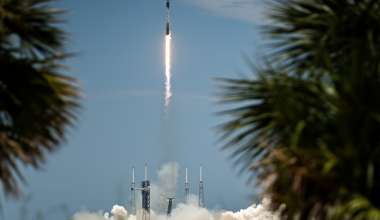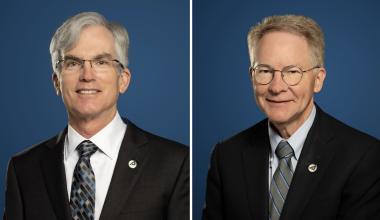The implosion of OceanGate’s Titan submersible in 2023 underscored the enormous risks of operating novel vehicles without safety regulations, or contingency plans in the event of emergencies. This tragic accident not only illustrates the critical importance of emergency protocols, but also serves as an apt analogy for space safety. To advance the topic of in-space rescue capabilities and protocols, The Aerospace Corporation and RAND recently sponsored and co-hosted the first U.S. Space Rescue Workshop, bringing government, industry, and private space organizations together for a series of frank discussions and tabletop exercises under the Chatham House Rule, spotlighting the current state of human spaceflight rescue and practical means of bridging current capability gaps for potential rescue needs.

Workshop participants discussed various examples of emergencies requiring external assistance efforts, such as the failure of a spacecraft’s propulsion system while in orbit, breaches of pressurized compartments, illness or injury of astronauts, and breakdowns of surface exploration vehicles in which crew is stranded. During the workshop’s tabletop exercise, participants were given fictional scenarios involving a commercial low Earth orbit “tourist” flight that can’t reenter due to parachute damage, and a scenario in which a pressurized lunar rover fails, leaving several astronauts stranded.
“As the frequency of spaceflight and access to space continues to grow, humans will spend more time in space than ever before, and we all know that this is a place where things can and do go wrong. Our rescue workshop topics and tabletop scenarios were predicated on that probability,” said Uma Bruegman, executive director of Aerospace’s Space Safety Institute and a cohost of the event. “We see these activities as part of a series of engagements with leading stakeholders to comprehensively tackle one important piece of the broader space safety challenge.”
Agreements and Accords
Much like the topic of in-space rescue itself, the space rescue capability gap remains ongoing. In the late 1960s, the Outer Space Treaty and Rescue and Return Agreement entered into force, requiring that nations render all possible assistance to astronauts in an emergency. The Artemis Accords signed in 2020 similarly require all signatories commit to taking all reasonable efforts to render necessary assistance to personnel in outer space who are in distress and acknowledges national obligations under the Rescue and Return Agreement.
While these agreements do not require signatory nations to develop space rescue capabilities, the United Nations Convention on the Law of the Sea offers a potential model for such a measure. The Convention requires coastal nations to “promote the establishment, operation and maintenance” of search and rescue services and to cooperate on search and rescue efforts. Following the implosion of the commercial Titan submersible, a multinational cooperative effort including the U.S. Coast Guard, Navy and Air National Guard searched a swath of ocean more than 10,000 square miles across attempting to rescue survivors.
Currently, however, there is no entity specifically chartered to provide in-space rescue services. To date, neither the U.S. government nor commercial spaceflight providers have known plans in place to conduct a timely rescue of a crew or participants from a distressed spacecraft in low Earth orbit or anywhere else in space. Given the absence of voluntarily crafted rescue plans and dedicated resources, today’s spaceflight participants journey entirely at their own risk, rendering the need for new capabilities more important than ever.
“All too often it takes a costly mistake to spur serious policy change or innovation, so we need to continue raising awareness of the importance of space rescue and escape capabilities so we can save lives and missions,” said Dr. Grant Cates, senior project leader of Aerospace’s Space Architecture Department, who kickstarted recent research on space rescue after applying for the 2021 Inspiration4 civilian spaceflight mission. “Getting these capabilities in place will be an evolutionary process, but we can partially close the gap today by leveraging existing capabilities and vehicles for rescue missions. That being said, technological advances, research and development are needed now more than ever to develop future solutions.”
Bridging the Capability Gap
Key capabilities for in-space rescue discussed during the workshop include common docking mechanisms for all crewed spacecraft, timely availability of a rescue spacecraft or a safe haven to escape to, and charters and sufficient resources for government, commercial, and/or international organizational entities to plan for, train for, coordinate, and conduct in-space rescues. Another capability in discussion is the integration of rescue plans into launch plans, and the repurposing of other rockets scheduled for orbital launch for in-space rescue missions.
A follow-on virtual workshop was held to accommodate organizations who could not participate in the initial workshop. Discussions are ongoing, and Aerospace and RAND will co-host a panel discussion on this topic at the AIAA ASCEND conference in Las Vegas this July.
“Hope is not a plan—we can, and should, do better,” said Jan Osburg, senior engineer at The RAND Corporation. “While it may be many years before we may need a dedicated space rescue organization with its own launch vehicles and spacecraft at the ready 24/7, having a small team tasked with both developing space rescue strategy and coordinating any actual space rescue missions should the need arise makes sense now. The technology challenges, I think, are surmountable. It’s the organizational challenges, maybe even the legal challenges, that currently seem to be the bottlenecks. Whoever takes the initiative here can set the standards and procedures and get others involved and engaged in this effort with them, which has tremendous humanitarian and strategic advantages.”








